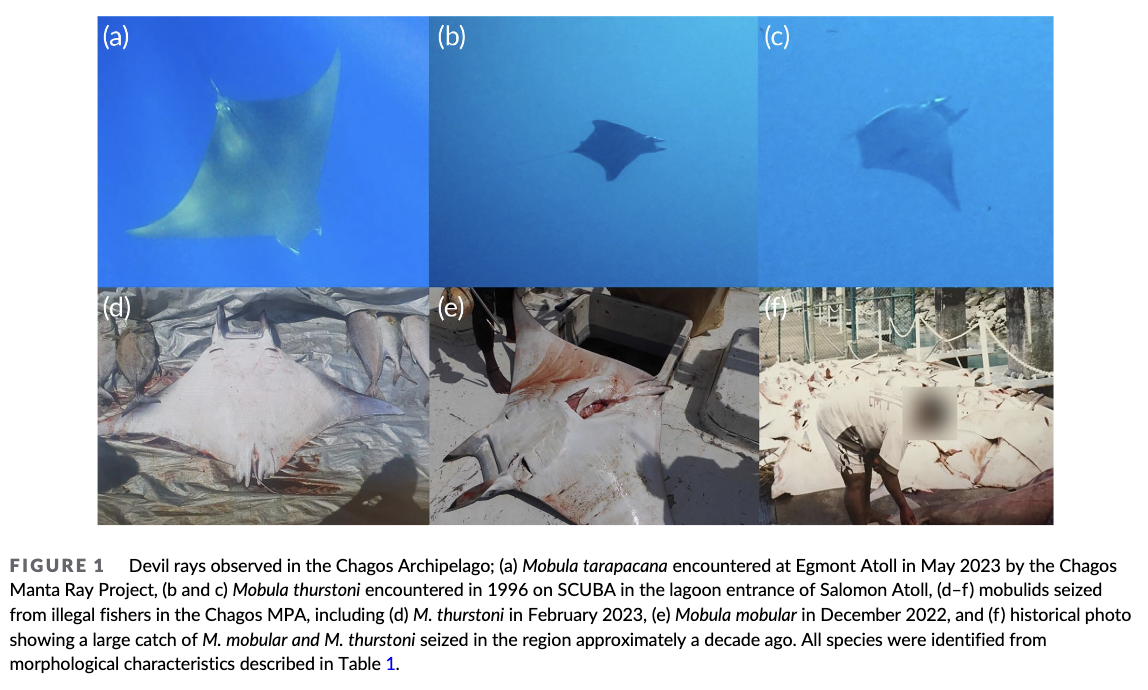First records of the sicklefin (Mobula tarapacana), bentfin (Mobula thurstoni), and spinetail (Mobula mobular) devil rays in the Chagos Archipelago
February 2024
Joanna L. Harris, Claire Collins, Mark Spalding & Guy M. W. Stevens
Keywords: BIOT • Distribution • Illegal Fishing • Indian Ocean • Marine Protected Area • Mobulidae

Summary: Sicklefin, bentfin and spinetail devil rays are filter-feeding elasmobranchs that belong to the monogeneric family Mobulidae. Like all the larger mobulid ray species, these species are exploited for their cartilaginous gill plates, which are sieve-like structures that filter their prey from the ocean. Understanding the range and distribution of all mobulid species is essential for developing spatially sufficient conservation management strategies. Recent encounters with these devil rays in the Chagos Archipelago provide the first confirmed observations of live specimens of these species in this region. Examination of illegal fishing photo archives collected during enforcement revealed these endangered species are being caught within the archipelago's vast no-take marine protected area.
Abstract
“Recent encounters with sicklefin (Mobula tarapacana) and bentfin (Mobula thurstoni) devil rays in the Chagos Archipelago provide the first confirmed observations of live specimens of these species in this region. Examination of illegal fishing photo archives collected during enforcement revealed these endangered species, and spine-tail devil rays (Mobula mobular), are being caught within the archipelago's vast no-take marine protected area. Future cooperation between authorities and mobulid ray experts is crucial to improve the availability and accuracy of enforcement data and improve management of illegal fishing and mobulid ray conservation activities.”
Author Affiliations
The Manta Trust
School of Biological and Marine Sciences, University of Plymouth
Centre for Ecology and Conservation, College of Life and Environmental Sciences, University of Exeter
Institute of Zoology, Zoological Society of London
Conservation Science Group, Department of Zoology, University of Cambridge
Funded by
Bertarelli Foundation
Contribution towards the Manta Trust's Strategic Plan
Goal 2: Strategic Objective 2.2 - Regulations and effective enforcement exist to reduce manta and devil ray capture and bycatch mortality in geographical focus areas.
Goal 3: Strategic Objective 3.1: All manta and devil ray species in the regions where we work are fully protected and conserved through species management plans.
Goal 3: Strategic Objective 3.2 - Key manta and devil ray aggregation sites in the regions where we work fall within protected areas that are effectively managed.

